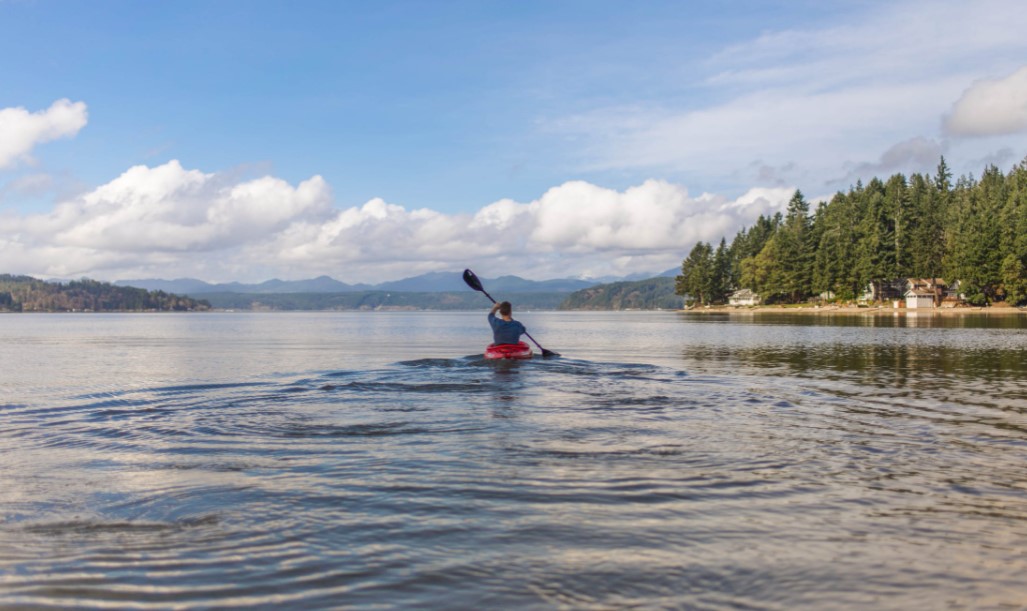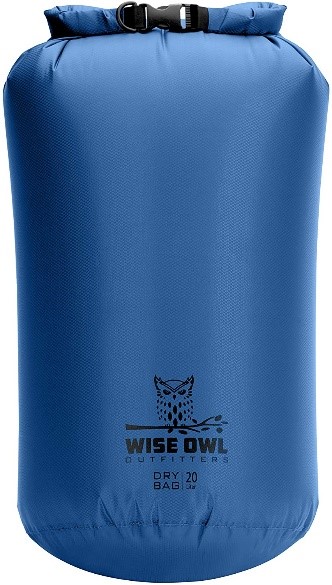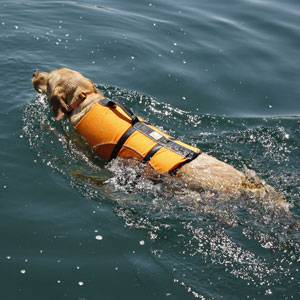
Kayaking is one of those activities that seems fairly intuitive. Most people can quickly figure out how to move a kayak in their preferred general direction. But there is a bit of difference between efficiently paddling a kayak and simply moving the boat about.
Before getting into how you can paddle your kayak, it is crucial to understand the fundamentals of kayak paddling.
Table of Contents
How to Hold Your Paddle
Your kayak paddle typically consists of a shaft that links the two blades. Your hand should be on the paddle’s shaft between the blades. The most effective way to make sure your hands are situated properly is to place the paddle on your head. You are holding the paddle correctly only when your elbows make a 90-degree angle.
Proper handling allows you to paddle more effectively. Holding the paddle correctly also means your shoulders will remain in a solid position to minimize the possibility of an injury, which could cause you to fall out of your kayak. Thankfully, a kayak life vest can come to the rescue, making sure you stay afloat.
What Type of Paddle Blades Exist?
There are two types of paddle blades: asymmetric and symmetric. Most of the basic kayak paddles are symmetrical blades.
What this means is that the blades are either oval or square. How the paddle is held doesn’t matter if the blades are symmetrical; it looks the same regardless.
On the other hand, asymmetrical blades have one side longer than the other on the shaft. This design enables them to seamlessly flow through the water. However, unlike the symmetrical blade, the short side of the paddle has to be on the bottom.
Paddle Blade Feather
Feather is the term used to describe paddle blades that have been offset against each other. Learning how to paddle a kayak is a lot easier with a non-feathered paddle. However, in the long term, you will end up using some sort of feather.
If you use a feathered paddle while learning how to paddle a kayak, it is important to remember that you need to twist the paddle between strokes. This will keep the blade in the right direction and ensure that it doesn’t accidentally slice through the water.

Curved & Flat Paddle Blades
How you hold your paddle doesn’t matter if the blade is flat. However, if it is curved, the concave part must be facing you when you paddle. Picture a spoon; you wouldn’t try to eat soup with the back of the spoon, right?
Correct Kayak Paddling Posture
When paddling a kayak, it is important to make efficient moves. This means using only the appropriate muscles when kayak paddling. While your arms are powerful, your core is a lot stronger. If you are paddling over sessions spanning hours, your arms will eventually begin to tire, and that will cause your paddling to become less efficient.
For this reason, it is crucial to engage the muscles of your core when paddling. This is only possible when you have the correct posture in the kayak.
You should be seated upright with your back in a straight line, your head above your butt, and your feet on the footrest. While the backrests can provide support, it is important to hold yourself upright using your core.
Choosing to lean back isn’t only terrible kayak paddling form, but it can also be very bad for your back. This is because your arms have to be within the 90-degree angle to use your shoulders to create power.
Learning the correct kayaking posture can be a bit daunting, especially if it is your first time in a kayak. Leaning too much to one side or the back can cause you to tip the kayak over. The last thing you want is your belongings to get wet, so it is best to get a dry bag, particularly one from Wise Owl Outfitters.

>> Check current price <<
Backward Kayak Paddling Technique
This technique is great for controlling your speed or simply bringing your kayak to a stop. You should plant your paddle. This is done by winding your body and planting your paddle next to your hip. The blade should be perpendicular to the kayak. Make sure to push the paddle forward, so it runs parallel to the kayak.
The next step is to twist and unwind your body using only your core muscles. While recovering, your paddles should reach towards your toes. At this point, you should lift the paddle out of the water and plant the other blade into the water all in one smooth move.
Forward Kayak Paddling Technique
Paddling a boat seems like a straightforward thing to do, right? But learning how to paddle a recreational kayak and doing it efficiently requires some special techniques. The sweep stroke is a tip-to-tip stroke and is considered a basic forward paddle stroke.
During a sweep stroke, the catch position is with the back facing the paddle and up against the bow of the kayak. The paddle shaft should be horizontal while keeping the paddle blade fully emersed. Read on for more detail on proper forward paddling techniques to use while kayaking.
The first step is to reach and plant the paddle. Your stroke should begin by winding your body and reaching your paddle’s blade in the direction of your feet as you place it in the water. The blade should be at a right angle to your kayak.
Keep in mind that you are not pulling. To pull would mean using your arm muscles to move. Instead, you should be using your core muscle group, as this is a lot more efficient.
What you should do instead is to push using your top hand, rotating your body until the blade is lined up with your hips. To help you do this, you can use your eyes to follow the paddle’s path but remember to always look at where you are going.
The paddle should be next to the kayak’s side. As the paddle’s blade goes past your hips, you should slice it out of the water. If the paddle is feathered, you should twist it at the same time, so the blade on the opposite side is ready and lined up.
Your body should be wound up in a position that lets you plant the blade firmly, beginning the process all over again, only this time, on the other side of the kayak. The best way to effectively paddle your kayak forward is by using a vertical paddle. It helps to generate power.
Paddling Your Kayak to Move Sideways
To move sideways, you need to use draw strokes. These strokes and this paddling technique can be useful in moving towards other kayaks or the dock.
Draw strokes are quite difficult for a paddler and can also feel unstable because they do not generate much power. Nevertheless, it can be an effective paddling technique for some purposes.
When paddling sideways in a recreational kayak, you should twist your body in the direction you desire to move in. When turning, you must use your shoulders rather than your head.
Facing the direction you intend to turn to, stretch your paddle blade and plant it into the water. Your paddle blade has to be turned in your direction while running parallel to the kayak.
Next, pull your paddle blade in the direction of your hip, ensuring you stop just before you get to the kayak’s side. Your top hand has to be in place so that your wrist stops at chest height as if you were reading the time. Doing this ensures your shoulders are kept in a sturdy position.
Unlike other paddling techniques, you have two options when recovering. You could choose a basic recovery, which means you have to slice the paddle’s blade in the kayak’s direction. You will have to twist your body to do this correctly.
The second option is to twist the paddle to a 90-degree angle, staying perpendicular to the kayak. You can then slice back toward your intended direction. Once your bottom arm becomes straight, you should twist back to the starting position, repeating the draw stroke.
Turning in a Kayak
The way to move a kayak forward is through a roughly vertical or strict vertical paddle stroke that follows a parallel line with the kayak. The opposite is true for a turning stroke.
When learning how to paddle a kayak, it is important to remember that the key to turning your kayak is the arc and twist move. To turn the kayak, it is important to create a wider arcing paddle stroke. Your leading arms should be almost straight, and your body should unwind and twist as if you are creating a half-circle between the kayak’s rear and your toes.
Typically, having a wider arc means that the turn will be fluid. Once the blade passes your seating position, pulling toward the kayak’s stern, you should slice it out of the water. At this point, you can choose to restart the process to turn the kayak a bit more, or you could simply go back to the forward stroke.
What Are the Three Golden Rules to Paddling a Kayak?
The three golden rules to keep in mind when paddling a kayak are to separate your body movements, use the power of your torso, and maintain control with an active blade. In addition, you should learn as much as you can about the different strokes you can use when paddling.
Keep in mind that when turning your paddle, you only need to turn slightly. Something as simple as half a turning stroke is sufficient.


